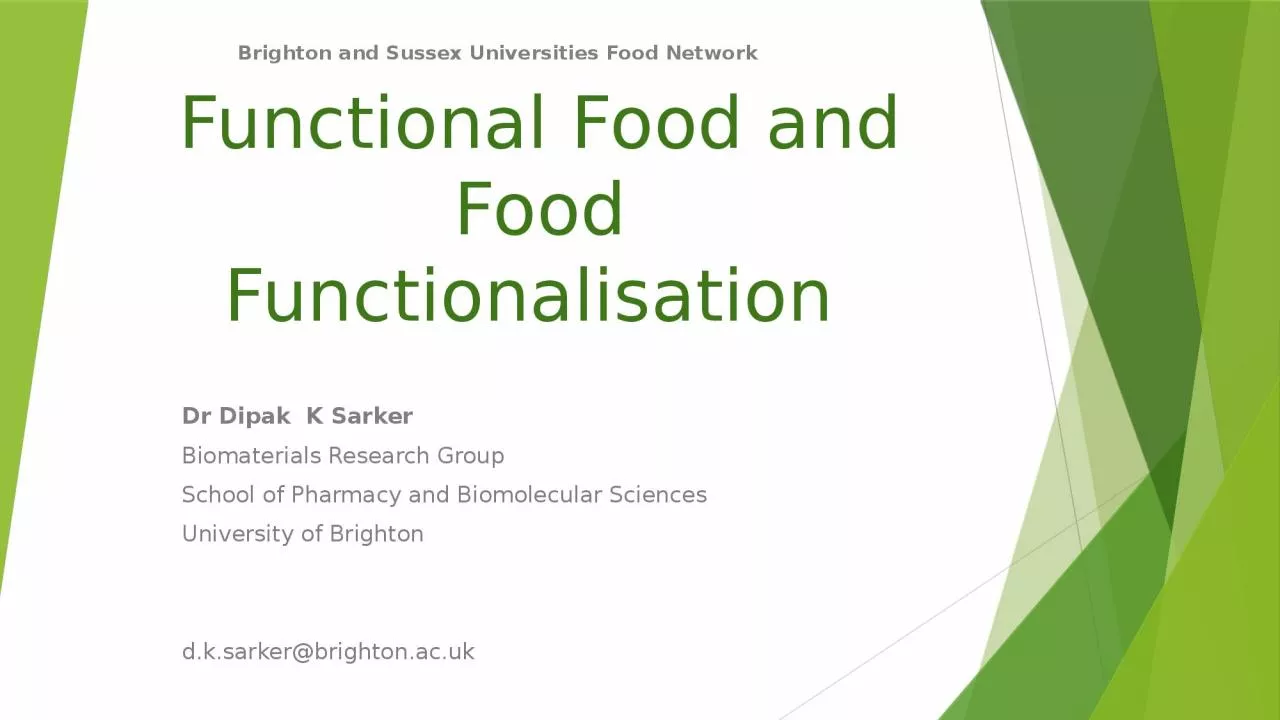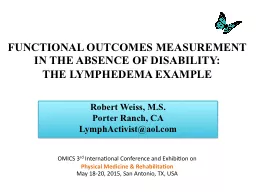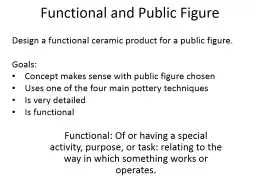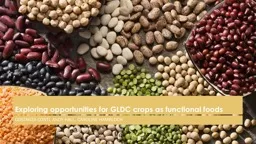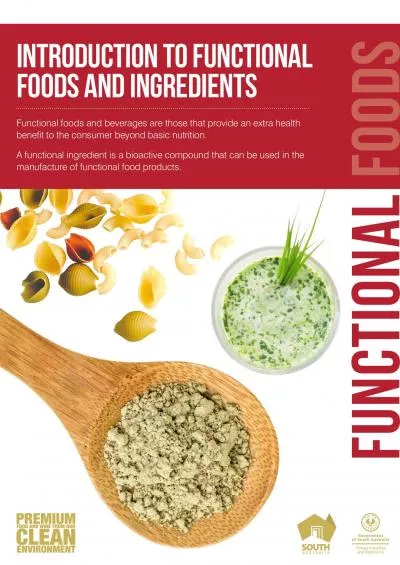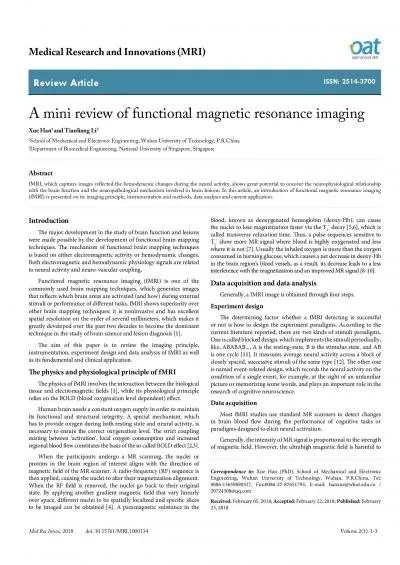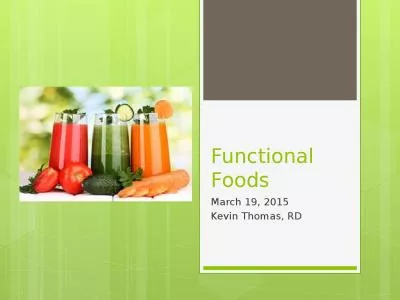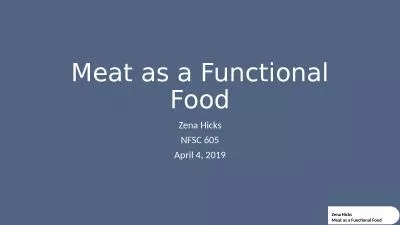PPT-Functional Food and Food
Author : rosemary | Published Date : 2022-06-14
Functionalisation Dr Dipak K Sarker Biomaterials Research Group School of Pharmacy and Biomolecular Sciences University of Brighton dksarkerbrightonacuk Brighton
Presentation Embed Code
Download Presentation
Download Presentation The PPT/PDF document "Functional Food and Food" is the property of its rightful owner. Permission is granted to download and print the materials on this website for personal, non-commercial use only, and to display it on your personal computer provided you do not modify the materials and that you retain all copyright notices contained in the materials. By downloading content from our website, you accept the terms of this agreement.
Functional Food and Food: Transcript
Download Rules Of Document
"Functional Food and Food"The content belongs to its owner. You may download and print it for personal use, without modification, and keep all copyright notices. By downloading, you agree to these terms.
Related Documents

